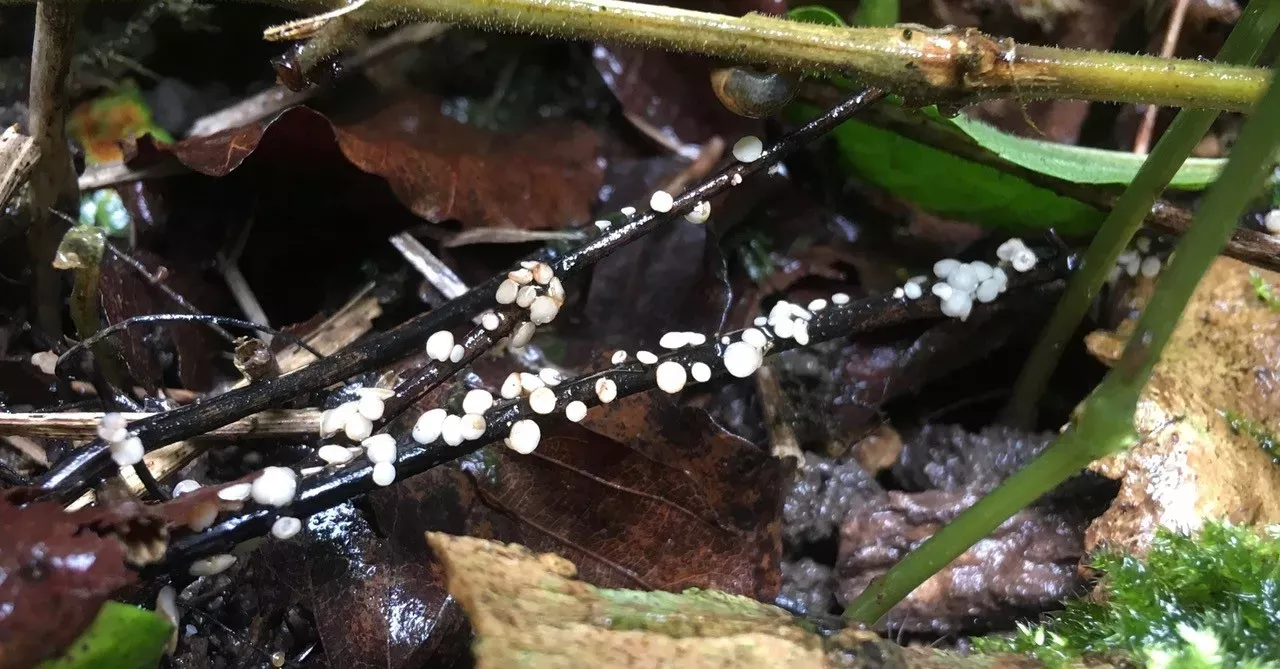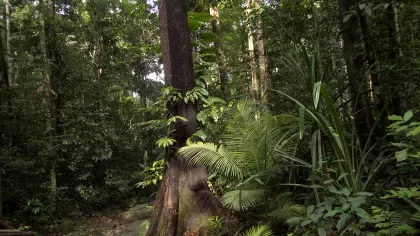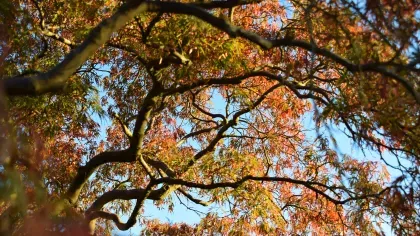25 May 2021
How much carbon is stored in Kew’s trees?
Trees draw down carbon dioxide from the atmosphere, helping to fight climate change, in our gardens and around the world.

The climate crisis calls for urgent action to prevent devastating impacts, including restoring natural habitats that can store and capture carbon - such as woodland and forest.
Why is carbon drawdown such a hot topic?
As countries and organisations around the world respond to the climate emergency by setting carbon reduction targets, the number of Net Zero commitments is growing fast - particularly in the lead up to COP26 in Glasgow later this year.
The Race to Zero collates the organisations who have committed to rapidly reduce and compensate for their carbon emissions - and RBG Kew has also joined in making this pledge.
As we see welcome signs of action on these climate pledges, there is growing investment in ‘nature-based solutions’ for climate mitigation – harnessing the incredible skills of plants and fungi to absorb carbon from the air in the fight against a changing climate.

Are nature-based offsets going to fix everything?
Unfortunately, nature-based climate solutions (carbon offsets) are not a ‘get out of jail free card': reducing emissions is a vital global priority.
We cannot continue emitting CO2 at the same rate: there is not enough land or sea for nature-based solutions to combat current emission levels.
Absorbing and storing carbon over the long-term within natural habitats will, however, be an essential part of the solution, and will bring an enormous number of invaluable other benefits, such as securing ecosystem services and providing sustainable livelihoods.

How do we measure carbon in trees?
Trees accumulate carbon within their woody biomass.
As they grow, they ‘trap’ carbon dioxide to form wood, leaves and roots. Around 50% of the dry mass of a tree is carbon and this carbon usually will be stored for the lifetime of the tree - or longer, if the wood is used to build a house, for example.
Most calculations of carbon sequestration from forests involve an estimation of the above-ground volume of wood, converted into a mass of carbon.
This year, the Spatial Analysis team at Kew are using laser scanning and modelling to accurately measure above-ground biomass at Kew and Wakehurst. This will provide an accurate picture of the carbon stored in wood above ground by our trees.


Growth is important
Trees sequester carbon over the course of their lifetime, but this drawdown is not steady or consistent:
- Trees sequester carbon differently over the season; more in spring and less or even negatively in winter.
- They sequester carbon dioxide during the day but about half of this is released at night.
- They sequester carbon when they are healthy and growing, and release it as they get older or start to die
Mature habitats don’t capture carbon at the same rate, and tree carbon sequestration cannot happen easily in managed and mature landscapes like Kew and Wakehurst. Growth is likely to be balanced by rotting, disease, damage and removal.

Below-ground carbon
Another important thing to consider: carbon stored below ground, in roots and soil.
Based on data gathered from UK Forest Research (Waring et al. 2020), in temperate forests in the UK approximately
- 17% of the total carbon is stored in tree above-ground tissues,
- 6% is stored in roots
- 5% is stored in surface litter and dead wood, and
- a vast 72% stays in the soil where it can remain for long periods helping to mitigate climate change.
All trees in the UK are dependent on mycorrhizal fungi that mine the soil, fulfilling the mineral nutritional needs of trees (mostly nitrogen and phosphorus) in exchange for 20-30% of the carbon fixed by trees via photosynthesis. So mycorrhizal fungi act as carbon sinks in soil.
Did you know? 1/3 of the microbial biomass in soil is made up of fungi and a square centimetre of soil can contain several meters of fungal filaments.
Our scientists working on plant-fungal interactions at Kew are collaborating with The Carbon Community, Imperial College and ETH Zürich to optimise plantations of trees and their mycorrhizal fungi for below-ground carbon sequestration.

Local impact
Trees, much loved by all, are complex plants that have an enormous variety of impacts on the world around them.
A recent survey of Ealing's trees suggest that they store 76,670 tonnes of carbon and have an Amenity Value of over £3 billion.
They provide an incredibly array of vital services, reducing flooding, improving air quality and conserving energy and enriching biodiversity. By just taking a walk around a wooded area, people often feel refreshed and less stressed.
Understanding and measuring how trees (and soils) store carbon could be key to understanding how best we can reduce the carbon dioxide levels in our atmosphere, and preventing the devastating consequences that will follow.
Find out about Kew’s work to reduce our carbon emissions and reach climate positive by 2030.




